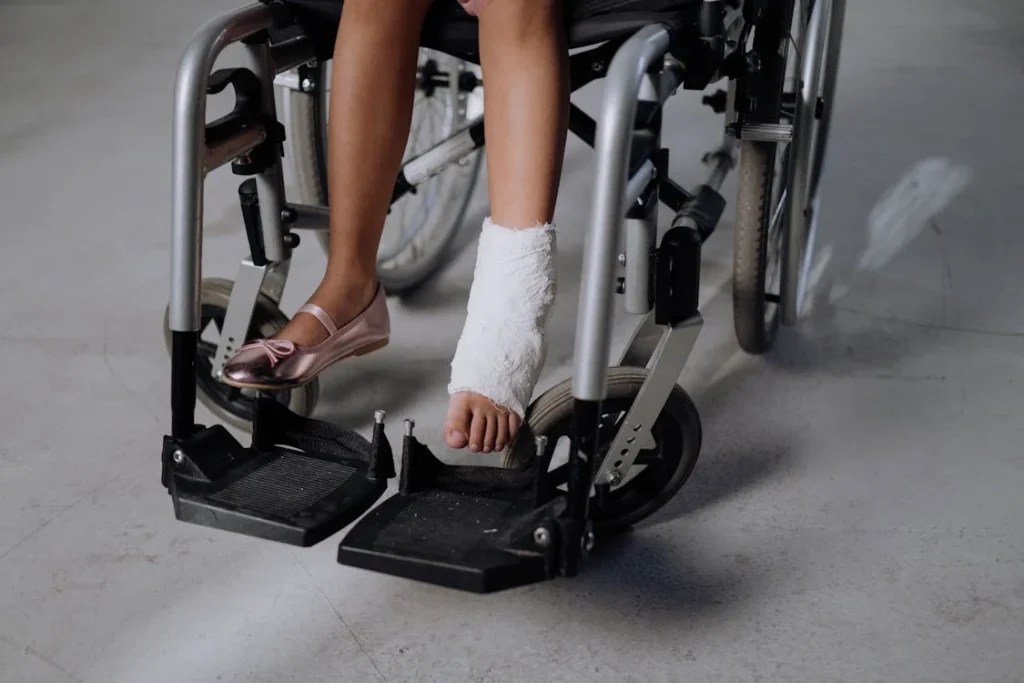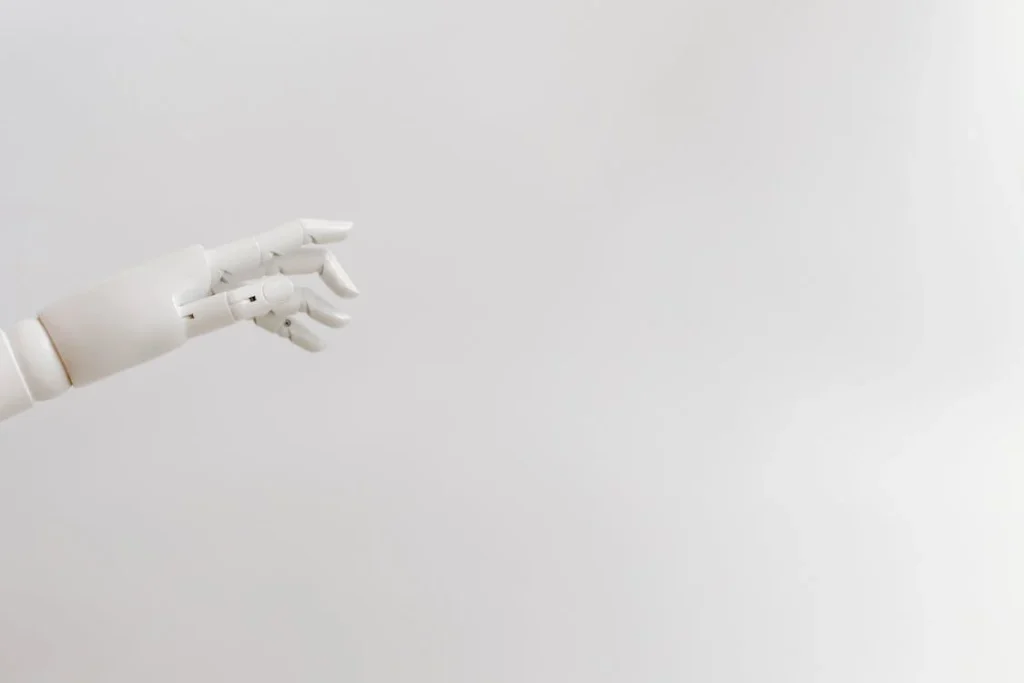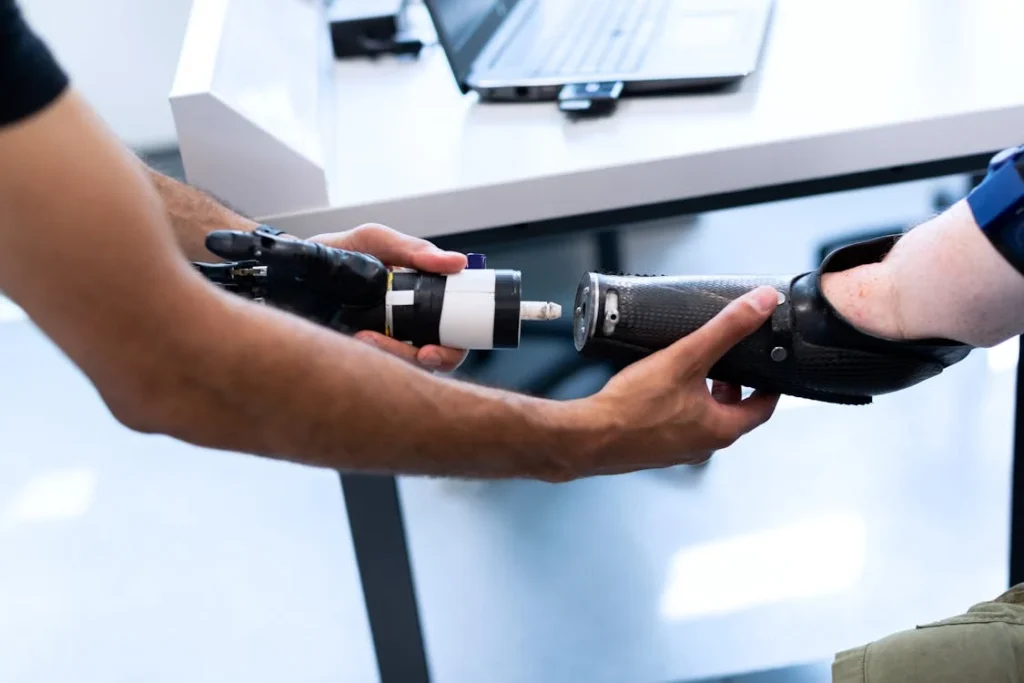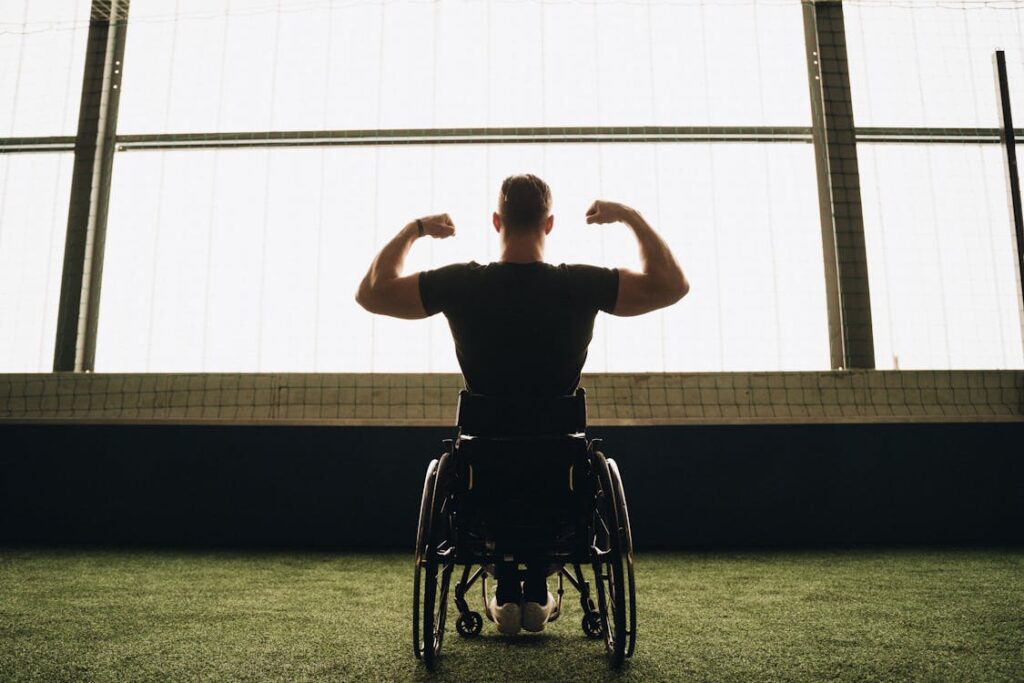Disability has been a part of human history for centuries, but the way it is perceived varies from culture to culture. In India, attitudes toward disability have been shaped by a mix of ancient beliefs, religious traditions, and social structures. For many years, disability was often misunderstood, sometimes even feared, and associated with karma, fate, or divine punishment. However, as India has progressed, so too have its perspectives on disability.
Modern India is witnessing a shift toward inclusion, accessibility, and empowerment for individuals with disabilities. Laws, technology, and social awareness campaigns are changing how people with disabilities are treated in society. While traditional beliefs still influence some aspects of daily life, there is a growing recognition that individuals with disabilities deserve equal opportunities, respect, and independence.

Traditional Beliefs About Disability in India
For centuries, disability in India has been deeply connected to religious and cultural beliefs. Many of these ideas originated in ancient scriptures, folklore, and social traditions.
While some beliefs encouraged compassion and support, others led to stigma, discrimination, and exclusion. Understanding these historical views helps us see how they continue to influence attitudes today.
The Influence of Karma and Fate
One of the most common traditional beliefs about disability in India is its connection to karma. Many people historically believed that disability was a result of actions from a past life.
According to Hindu philosophy, karma determines a person’s circumstances, including health and physical abilities. If someone was born with a disability, it was often seen as divine justice for past deeds.
While this belief encouraged acceptance in some cases, it also led to a sense of resignation. Families, instead of seeking medical treatment or educational opportunities, sometimes believed that nothing could be done to change the situation.
This mindset contributed to limited efforts in rehabilitation or inclusion. However, modern interpretations of karma focus more on personal growth and improvement, rather than punishment.
Religious Views and the Role of Spirituality
Religion has played a dual role in shaping attitudes toward disability in India. On one hand, Hinduism, Buddhism, Islam, and Christianity emphasize compassion and charity toward individuals with disabilities.
Many temples, mosques, and churches run charitable institutions, offering food, shelter, and medical assistance. Saints and religious leaders have often advocated for kindness toward people with disabilities, reinforcing the idea that they deserve care and dignity.
However, in some cases, religious beliefs have also led to misconceptions. Some communities believed that disabilities were caused by curses, evil spirits, or negative energy.
This led to individuals with disabilities being seen as “inauspicious” in certain situations, such as weddings or religious ceremonies. These superstitions, though less common today, still exist in some rural areas.
Social Stigma and Marginalization
Beyond religious and spiritual beliefs, traditional Indian society often viewed disability through the lens of social hierarchy. In a culture where family reputation and marriage prospects are highly valued, having a disabled family member was sometimes seen as a burden.
Many individuals with disabilities, especially women, faced isolation and were discouraged from participating in public life.
In many rural communities, lack of education and awareness meant that children with disabilities were often kept at home, away from schools and social gatherings. Some families hid disabilities due to fear of social judgment, preventing their loved ones from receiving the support they needed.
Disability in Ancient Indian Texts and History
Despite the stigma, Indian history also offers examples of individuals with disabilities who were respected and even revered. Some ancient texts depict warriors, sages, and scholars with physical impairments who made significant contributions to society.
The Mahabharata, for example, features characters like Dhritarashtra, the blind king, and Ashtavakra, a sage with physical deformities who was highly intelligent and respected.
In traditional Indian medicine, systems like Ayurveda and Siddha recognized disabilities and sought to provide treatments using herbs, massages, and physical therapies.
These medical traditions laid the foundation for modern rehabilitation techniques and prosthetic development in India today.
The Shift Toward Change
Over time, as India has modernized, traditional beliefs about disability have started to evolve. With increased exposure to global disability rights movements, scientific advancements, and legal reforms, there is a growing awareness that disability is not a curse or a result of past deeds—it is simply a part of life that should be supported, not stigmatized.

Modern Perspectives on Disability in India
As India has progressed economically and socially, there has been a noticeable shift in how disability is perceived. The rise of disability rights activism, legal protections, and advances in medical technology have played a crucial role in changing mindsets.
While traditional beliefs still persist in some areas, modern India is moving toward a more inclusive and empowering approach to disability.
Legal Reforms and Disability Rights
One of the most significant turning points for disability rights in India was the enactment of the Rights of Persons with Disabilities (RPwD) Act, 2016.
This law replaced the earlier Persons with Disabilities Act, 1995, expanding the number of recognized disabilities from seven to twenty-one and strengthening legal protections for individuals with disabilities.
The act ensures equal rights in education, employment, healthcare, and accessibility, marking a major step toward inclusion.
The Indian government has also launched various initiatives to promote disability inclusion. The Accessible India Campaign (Sugamya Bharat Abhiyan) aims to improve accessibility in public buildings, transportation, and digital services.
Many government offices, railway stations, and airports have been upgraded with ramps, elevators, and tactile pathways to accommodate individuals with disabilities.
Despite these advancements, implementation remains a challenge. Many laws and policies exist on paper, but enforcement is often weak, especially in smaller towns and rural areas.
Awareness and advocacy continue to be essential in ensuring that these rights translate into real change.
Education and Employment Opportunities
Modern India has made strides in making education more accessible for individuals with disabilities. Many schools and universities now offer inclusive classrooms, assistive technology, and special education programs to support students with diverse needs.
The government has introduced scholarships and financial aid programs to encourage children with disabilities to pursue higher education.
Employment opportunities for individuals with disabilities have also expanded, though challenges remain. The RPwD Act mandates that companies reserve a certain percentage of jobs for persons with disabilities, encouraging more inclusive hiring practices.
Some businesses have gone beyond legal requirements by introducing disability-friendly workspaces, remote work options, and assistive technologies.
However, workplace discrimination and bias still exist. Many employers hesitate to hire individuals with disabilities due to misconceptions about productivity or additional costs for accommodations.
Continued advocacy and awareness campaigns are necessary to change corporate attitudes and promote equal opportunities in the job market.
The Role of Assistive Technology and Prosthetics
Advances in medical technology have significantly improved the quality of life for individuals with disabilities in India. The availability of prosthetic limbs, mobility aids, and assistive devices has increased, providing individuals with greater independence.
India has been at the forefront of developing affordable prosthetic solutions. The Jaipur Foot, one of the most well-known low-cost prosthetic limbs, has restored mobility for thousands of people across the country.
Companies like Robobionics are also contributing to innovation in prosthetic technology with products like Grippy™, a lightweight and affordable bionic hand that helps individuals regain functionality and confidence.
As more people gain access to modern prosthetic solutions, the stigma surrounding disability is gradually decreasing.
When individuals with disabilities can fully participate in society—whether through education, work, or social activities—public perception shifts from viewing disability as a limitation to seeing it as a different way of experiencing the world.
Changing Social Attitudes and Representation
Media representation of disability in India has also improved in recent years. Films, television shows, and advertisements are beginning to portray individuals with disabilities in a more positive and realistic light.
Instead of focusing on disability as a tragedy, modern narratives highlight stories of empowerment, resilience, and success.
Social media has played a key role in raising awareness about disability rights and inclusion. Disability activists, bloggers, and influencers use digital platforms to share their experiences, challenge stereotypes, and push for policy changes.
Online communities provide individuals with disabilities a space to connect, support each other, and demand equal treatment.
While social attitudes are changing, deep-rooted biases still exist in certain parts of society. Marriage prospects for individuals with disabilities remain a sensitive issue, and many families still struggle with the idea of a disabled family member leading an independent life.
The challenge moving forward is to ensure that awareness leads to meaningful change, not just in policies but in everyday interactions and opportunities.
The Path Toward Full Inclusion
Modern India is moving in the right direction when it comes to disability inclusion, but there is still work to be done. Legal protections, technological advancements, and social awareness efforts must continue to evolve.
Families, communities, businesses, and the government all have a role to play in ensuring that individuals with disabilities are not just accommodated but fully integrated into every aspect of life.

Bridging the Gap Between Traditional Beliefs and Modern Inclusion
India’s journey toward full disability inclusion is shaped by the tension between deeply rooted traditional beliefs and the progressive strides made in recent years.
While laws, technology, and advocacy are pushing for a more inclusive society, cultural attitudes still influence how disability is perceived in many parts of the country. Bridging this gap requires a collective effort from families, communities, educators, employers, and policymakers.
Educating Families and Communities
One of the most effective ways to shift traditional mindsets about disability is through education. Many misconceptions about disability persist because of a lack of awareness.
Families, particularly in rural areas, often do not have access to accurate information about medical advancements, rehabilitation programs, or assistive technologies.
As a result, they may rely on outdated beliefs that frame disability as a life-long limitation rather than a condition that can be managed with the right support.
Community awareness programs, led by NGOs, social workers, and disability rights groups, are playing a crucial role in changing this.
By introducing families to real-life examples of individuals with disabilities who are leading independent and successful lives, these programs challenge old narratives and replace them with a more hopeful and empowering vision.
When families see that disability does not define a person’s potential, they become more supportive and proactive in seeking education, employment, and medical assistance for their loved ones.
Making Accessibility a Cultural Priority
For real change to take place, accessibility must be embedded into everyday life. While urban areas in India have started to improve physical accessibility in schools, offices, public transport, and shopping centers, many places are still not designed with disability inclusion in mind.
Cultural events, religious sites, and festivals are a major part of Indian life, yet many of them remain inaccessible to individuals with disabilities. Temples, mosques, and churches often lack ramps or designated areas for wheelchair users.
Major festivals like Diwali, Navratri, and Eid involve large gatherings, but few accommodations are made for individuals with mobility impairments, visual impairments, or other disabilities. Ensuring that these cultural spaces and traditions are inclusive is an important step toward changing attitudes.
The media also plays a powerful role in shaping how disability is perceived. Representation in films, television, and advertisements can challenge stereotypes and promote more positive narratives.
When disability is portrayed as just another aspect of human diversity rather than a source of pity or inspiration, it normalizes the presence of individuals with disabilities in mainstream society.
Encouraging Employment and Economic Independence
One of the most significant ways to change cultural attitudes about disability is by demonstrating that individuals with disabilities can contribute meaningfully to society.
Employment plays a critical role in this. When people with disabilities are seen working in offices, running businesses, and participating in economic activities, it challenges the outdated idea that they are dependent on others.
Many multinational companies in India have started hiring individuals with disabilities, offering adaptive work environments, flexible job roles, and skill development programs.
However, smaller businesses and traditional industries still need to embrace disability inclusion. Encouraging local businesses to hire individuals with disabilities through incentives and training programs can help integrate more people into the workforce and shift societal attitudes toward greater acceptance.
Self-employment and entrepreneurship also offer promising opportunities. With access to microloans, vocational training, and digital platforms, individuals with disabilities can create their own businesses, providing financial independence and breaking the cycle of dependence.
India’s growing gig economy, e-commerce platforms, and remote work opportunities have further expanded employment options for individuals with disabilities, allowing them to work without facing physical accessibility challenges.
Changing How Disability Is Discussed at Home
True cultural change begins at home. The way parents, siblings, and extended family members talk about disability influences a child’s self-perception and confidence.
Instead of treating disability as a weakness or a tragedy, families must emphasize strengths, encourage independence, and provide the emotional and practical support needed for a fulfilling life.
Conversations around marriage and relationships also need to evolve. In many families, individuals with disabilities are discouraged from seeking romantic relationships due to concerns about societal acceptance.
This mindset reinforces the idea that disability makes someone less desirable or capable of having a family. Changing these beliefs requires open discussions, representation of successful relationships in the media, and greater acceptance of disability as a normal part of life.
Looking Ahead: A More Inclusive Future
India is at a turning point in its approach to disability. While traditional beliefs still influence many aspects of life, modern perspectives are steadily reshaping how disability is understood and addressed.
With continued advocacy, legal enforcement, and cultural shifts, India has the potential to become a leader in disability inclusion.
By combining the strengths of both traditional values—such as the emphasis on family support and community care—with modern advancements in accessibility, technology, and policy, India can create a society where individuals with disabilities are not only accepted but empowered.
The future of disability inclusion in India depends on breaking down outdated beliefs, embracing new possibilities, and ensuring that every person, regardless of ability, has the opportunity to thrive.

The Role of Traditional Healing and Modern Medicine in Disability Management
In India, disability management has been influenced by both traditional healing practices and modern medical advancements.
While modern rehabilitation services, prosthetics, and assistive devices are becoming more widely available, many people—especially in rural areas—continue to rely on traditional healing methods.
The coexistence of these two approaches highlights both the strengths and challenges in India’s healthcare system when it comes to disability care.
Traditional Healing Practices and Their Influence
For centuries, India has had a rich history of alternative medicine, with practices like Ayurveda, Siddha, Unani, and homeopathy playing a central role in health and wellness.
Many families, particularly in rural and tribal communities, still turn to these traditional practices for treating disabilities and physical impairments.
Ayurveda, one of the oldest healing systems in the world, has long provided therapies for physical rehabilitation. Herbal oils, massages, and yoga-based therapies have been used to manage mobility issues, nerve disorders, and muscular conditions.
Some traditional healers claim that these treatments can improve flexibility, reduce pain, and even help restore function in individuals with certain disabilities.
Siddha medicine, practiced mainly in Tamil Nadu, has also been used to treat conditions like cerebral palsy, paralysis, and muscular dystrophy.
Therapies involving herbal preparations, metal-based medicines, and external applications are believed to help strengthen the body and improve overall health.
Faith healing and spiritual interventions also play a role in some communities. Individuals with disabilities are sometimes taken to religious shrines, temples, or healing centers where rituals, prayers, and blessings are performed in hopes of bringing about a cure.
Some families believe that divine intervention can reverse a disability, while others seek spiritual healing alongside medical treatment.
The Limitations of Traditional Approaches
While traditional medicine and alternative therapies may provide relief from pain or improve general well-being, they are often not a substitute for medical interventions that require surgery, prosthetics, or long-term rehabilitation.
One of the biggest challenges in India’s healthcare system is that many individuals with disabilities, particularly in rural areas, do not receive early medical intervention. Instead, they may first try alternative treatments, delaying access to necessary modern medical care.
Another issue is the lack of scientific validation for many traditional disability treatments. While some Ayurvedic and Siddha therapies may help manage symptoms, there is limited clinical evidence to support their effectiveness in treating severe disabilities.
This creates a challenge in balancing respect for traditional knowledge with the need for evidence-based medical care.
Additionally, reliance on traditional healing practices sometimes reinforces outdated beliefs about disability. If a condition does not improve after spiritual rituals or alternative treatments, some families may see it as a sign of fate rather than seeking further medical intervention.
This mindset can prevent individuals from accessing rehabilitation services, prosthetic devices, and other forms of assistive technology that could significantly improve their quality of life.
The Rise of Modern Medical Interventions
Despite the continued influence of traditional healing, modern medicine has become the primary method of disability treatment in India.
Advances in medical research, prosthetic technology, and physiotherapy have made it possible for individuals with disabilities to achieve greater independence and mobility.
Prosthetic solutions, such as the Jaipur Foot, have made artificial limbs more accessible to people in India. The development of affordable bionic hands, like Robobionics’ Grippy™, is further transforming how individuals with upper-limb disabilities regain function.
These innovations are helping bridge the gap between expensive imported prosthetic devices and cost-effective local solutions.
Physiotherapy and occupational therapy have also become key components of disability management. Unlike traditional healing methods that focus on general wellness, these therapies use scientifically backed rehabilitation techniques to improve strength, mobility, and coordination.
With the increasing number of physiotherapy centers and trained professionals across India, more individuals with disabilities now have access to structured rehabilitation programs.
Another major breakthrough has been the expansion of surgical interventions for conditions like spinal cord injuries, cerebral palsy, and congenital limb deformities.
Many government hospitals now offer specialized orthopedic and neurology departments to treat disabilities that were once considered untreatable. The combination of medical advancements and early diagnosis is helping reduce long-term disability rates in India.
Combining Traditional Wisdom with Modern Science
Rather than viewing traditional and modern medicine as opposing forces, there is an opportunity to integrate them in a way that benefits individuals with disabilities.
Some hospitals and rehabilitation centers have started incorporating yoga therapy and Ayurvedic massages alongside modern physiotherapy techniques.
This blended approach helps individuals manage chronic pain, improve circulation, and maintain mental well-being while receiving scientifically proven treatments.
Government initiatives are also working to regulate and study the impact of traditional medicine on disability care. Research institutions are exploring whether certain herbal medicines, dietary interventions, or yoga techniques can be used to complement conventional rehabilitation therapies.
If backed by scientific evidence, these methods could become officially recognized as supplementary treatments rather than alternatives to modern medical care.
The Need for Awareness and Accessibility
One of the biggest challenges in India’s healthcare system is ensuring that all individuals with disabilities, regardless of their background, have access to the right treatment at the right time.
While alternative therapies may provide some benefits, individuals should be made aware of proven medical treatments that can significantly improve their condition.
Public health campaigns, government outreach programs, and education initiatives must work to eliminate misinformation and encourage early medical intervention for individuals with disabilities.
At the same time, modern healthcare services need to become more affordable and accessible to ensure that individuals do not turn to traditional healing out of necessity rather than choice.
Many rural areas still lack specialized disability treatment centers, forcing people to rely on local healers instead of trained medical professionals. Expanding disability-friendly healthcare infrastructure in underserved areas will be crucial in bridging this gap.
The Future of Disability Treatment in India
As India continues to modernize its approach to disability, a balanced integration of traditional and modern treatments can provide the best outcomes.
Respecting cultural traditions while ensuring that individuals receive evidence-based medical care will be key to creating a healthcare system that serves everyone.
By combining advancements in prosthetics, rehabilitation, and assistive technology with holistic approaches that promote overall well-being, India can move toward a future where disability is not seen as a limitation but as a condition that can be managed with the right support.

The Role of Family and Community in Shaping Disability Experiences
In India, family and community play a central role in shaping the lives of individuals with disabilities. Unlike in some Western cultures, where independence is highly valued, Indian society places a strong emphasis on family support and collective responsibility.
This cultural dynamic has both positive and negative effects on how people with disabilities experience daily life.
Family as the Primary Support System
For many individuals with disabilities in India, family is the main source of care and assistance. Parents, siblings, and extended relatives often take on caregiving responsibilities, providing emotional, financial, and physical support.
This close-knit structure ensures that individuals with disabilities are not left alone or abandoned, which can be a major advantage in a country where public disability services are still developing.
However, this family-centered approach also has limitations. Because many families believe that it is their duty to care for a disabled member, there is often less encouragement for independence.
In some cases, overprotectiveness prevents individuals from learning essential life skills, pursuing education, or seeking employment.
Families may fear that society will not be accepting, leading them to keep their loved ones at home rather than encouraging them to explore the world.
Another challenge is the financial burden that disability can place on a family. In lower-income households, where every member is expected to contribute to household income, caring for a disabled relative can be difficult.
Medical expenses, rehabilitation costs, and assistive devices like prosthetics can be expensive, and not all families can afford them. While government schemes exist to provide financial assistance, many families are unaware of these programs or face bureaucratic hurdles in accessing them.
Marriage and Disability: Cultural Expectations and Challenges
Marriage is a significant part of Indian culture, and for individuals with disabilities, it can be a particularly sensitive issue. In many traditional households, marriage is seen as a necessary milestone, but people with disabilities often face discrimination in the matchmaking process.
Some families struggle with the idea of their disabled children finding partners, fearing rejection from society or potential difficulties in managing a household.
In arranged marriages, which are still common in India, individuals with disabilities may be overlooked as potential spouses. Families looking for matches often prioritize physical ability, and in some cases, a disability may be hidden or downplayed to improve marriage prospects.
Women with disabilities face greater challenges, as societal expectations around gender roles often assume that a woman must be physically capable of managing household responsibilities.
Despite these challenges, perspectives on marriage and disability are gradually shifting. More individuals with disabilities are finding partners through modern avenues such as online platforms, social media, and communities that support disability inclusion.
Some organizations are also working to break stereotypes by arranging inclusive marriage events where individuals with disabilities can meet potential partners in an accepting environment.
The Role of the Community in Disability Inclusion
Beyond the family, the wider community also plays a crucial role in shaping disability experiences. In rural areas, where community bonds are strong, support for individuals with disabilities often comes from neighbors, religious institutions, and local organizations.
However, traditional attitudes can sometimes lead to exclusion, with people with disabilities being treated as objects of pity rather than as equal members of society.
In urban areas, where social structures are more fragmented, individuals with disabilities may have greater access to professional support services but may lack the informal community support that rural areas provide.
Many cities now have disability rights groups, accessible public spaces, and employment initiatives aimed at fostering inclusion. However, social isolation remains a problem, especially for individuals who struggle with mobility issues or face transportation barriers.
Religious institutions also play a significant role in shaping attitudes toward disability. Many temples, mosques, and churches offer charitable assistance, including free meals, medical aid, and vocational training for individuals with disabilities.
While this support is valuable, it sometimes reinforces the idea that disability is a condition that requires charity rather than equal rights and opportunities. The shift from a charity-based approach to an empowerment-based approach is still ongoing in many parts of the country.
Breaking Stereotypes Through Awareness and Advocacy
To change societal attitudes and create a more inclusive community environment, education and advocacy are essential. Schools, workplaces, and social institutions need to actively challenge outdated beliefs about disability and promote positive representation.
When individuals with disabilities are seen as capable professionals, athletes, entrepreneurs, and leaders, it shifts the narrative from dependence to empowerment.
Community engagement programs that involve individuals with disabilities in leadership roles can also help break stereotypes.
When disability is no longer associated with weakness or helplessness but instead with resilience and achievement, social attitudes begin to change.
While India has made progress in shifting its cultural perspectives on disability, the journey toward full inclusion is far from complete.
Families, communities, and institutions all have a role to play in ensuring that individuals with disabilities are not just supported but also empowered to lead independent and fulfilling lives.

The Intersection of Disability, Gender, and Socioeconomic Status in India
Disability in India does not exist in isolation—it is deeply influenced by factors such as gender and socioeconomic status.
While all individuals with disabilities face challenges, women, people from lower-income backgrounds, and those from marginalized communities often experience greater discrimination and fewer opportunities.
Understanding these overlapping struggles is crucial to creating a more inclusive society where disability rights are recognized for everyone, regardless of their background.
Gender and Disability: The Double Disadvantage
Women with disabilities in India often face a dual challenge—being both disabled and female in a society where gender inequality remains a significant issue.
Traditional gender roles expect women to take care of households, raise children, and manage family responsibilities. However, when a woman has a disability, these expectations become barriers, as many people assume that she cannot fulfill these roles.
One of the most significant challenges for women with disabilities is access to education. While many girls in India already face obstacles to attending school due to poverty or cultural beliefs, these challenges are even greater for those with disabilities.
Families may hesitate to send a disabled daughter to school, fearing for her safety or believing that education will not benefit her future.
As a result, many women with disabilities miss out on essential learning opportunities, making it harder for them to achieve financial independence later in life.
Employment opportunities are also more limited for women with disabilities. Many workplaces are not designed to accommodate both disability and gender-related needs, such as accessible restrooms or safe transportation.
Employers may assume that hiring a woman with a disability will require extra accommodations, leading to unconscious bias in hiring decisions. This prevents many women from achieving financial stability and limits their ability to contribute economically.
Marriage and relationships present additional challenges. In traditional Indian society, a woman’s ability to be a “good wife” is often linked to her physical abilities.
Because of this, many women with disabilities struggle to find marriage prospects, as families and potential partners may see them as less desirable.
Even when marriages do occur, women with disabilities are at higher risk of experiencing domestic violence, neglect, or abandonment. Since many disabled women are financially dependent on their families, they may find it difficult to leave abusive situations.
Despite these obstacles, disability rights organizations are working to change these narratives. Women-led advocacy groups are empowering disabled women through skill development, mentorship programs, and legal support.
More women with disabilities are entering higher education, leadership roles, and the workforce, proving that disability does not define a person’s capabilities.
Socioeconomic Status and Access to Disability Resources
While wealthier individuals with disabilities have access to better medical care, education, and assistive technology, those from lower-income backgrounds struggle with a lack of resources.
In India, disability often worsens existing financial difficulties, as many families cannot afford the cost of treatment, mobility aids, or specialized education.
One of the most significant barriers for low-income individuals with disabilities is healthcare. Government hospitals provide free or low-cost medical treatment, but they are often overcrowded, understaffed, and lacking in specialized disability care.
Many families living in villages must travel long distances to reach healthcare facilities, and the costs associated with travel and accommodation can be prohibitive.
As a result, many people with disabilities do not receive early medical intervention, leading to worsening conditions and lifelong impairments.
Access to assistive devices such as prosthetics, wheelchairs, and hearing aids is also unevenly distributed. While organizations like Robobionics and NGOs provide affordable prosthetic solutions, many individuals still struggle to afford them.
The government provides free prosthetic limbs through initiatives like the Artificial Limbs Manufacturing Corporation of India (ALIMCO), but long wait times and bureaucratic hurdles often prevent people from getting the devices they need in a timely manner.
Education is another area where socioeconomic disparities impact disabled individuals. While private schools may offer better accessibility features, government schools often lack ramps, accessible restrooms, or trained special educators.
Without the right support systems, many children with disabilities drop out of school, limiting their chances of securing a stable job in adulthood.
Employment opportunities are also scarce for individuals with disabilities from low-income backgrounds. Many jobs in India require physical labor, making them inaccessible to people with mobility impairments.
While desk jobs and digital work offer more possibilities, these opportunities are often available only to those who have had access to education and training.
Without economic support programs and vocational training, people with disabilities from disadvantaged backgrounds remain trapped in cycles of poverty.
Caste, Disability, and Social Marginalization
In some cases, disability intersects with caste discrimination, creating even greater barriers to inclusion. Individuals from marginalized caste communities often face exclusion in education, employment, and healthcare, and when disability is added to the equation, these challenges are intensified.
Traditionally, some Dalit communities have faced social discrimination, and those with disabilities within these communities often experience double marginalization.
They may be denied access to disability support programs, excluded from social events, or even mistreated in healthcare settings. In rural areas, where caste divisions are still deeply entrenched, a disabled person from a lower caste background may find it particularly difficult to access rehabilitation services or employment.
To address these disparities, some advocacy groups are working to provide intersectional support for individuals with disabilities from marginalized communities.
Government reservation policies, which allocate quotas for people with disabilities in education and employment, are helping bridge some of these gaps. However, better enforcement of these policies is needed to ensure that they reach those who need them most.
The Need for Inclusive Policies and Economic Support
To create a truly inclusive society, India must address the ways in which disability, gender, and socioeconomic status intersect. This means going beyond general disability rights policies and implementing targeted programs that support the most vulnerable populations.
Government initiatives should focus on financial assistance for low-income families, ensuring that people with disabilities can afford medical care, assistive devices, and education.
More funding should be allocated to rural healthcare programs, ensuring that disability-related services are available outside major cities.
Vocational training programs should be expanded to equip individuals with disabilities, especially women, with skills that allow them to enter the workforce.
Disability inclusion efforts must also challenge gender stereotypes and caste-based discrimination. Encouraging greater representation of disabled women and individuals from marginalized backgrounds in leadership roles can help shift societal attitudes.
More awareness campaigns are needed to highlight the importance of education, employment, and financial independence for individuals with disabilities, ensuring that they are not left behind in India’s progress.
Toward a More Equitable Future
India’s approach to disability inclusion is evolving, but addressing the intersections of disability, gender, and socioeconomic status remains a crucial challenge.
While legal protections and advocacy efforts are improving opportunities for some, many individuals continue to face discrimination based on multiple aspects of their identity.
By recognizing and addressing these overlapping barriers, India can move toward a future where disability is not compounded by financial hardship, gender bias, or social exclusion.
True progress will require a collective effort—from government policymakers to businesses, communities, and families—to ensure that every individual with a disability has the chance to live with dignity, independence, and opportunity.
Conclusion
The perception of disability in India is evolving, moving from deeply ingrained traditional beliefs toward a more modern, inclusive perspective. While cultural and religious views once associated disability with karma or misfortune, today’s India is embracing legal protections, assistive technology, and advocacy to empower individuals with disabilities. However, challenges remain, particularly in rural areas where stigma, lack of accessibility, and economic hardship continue to limit opportunities.
The intersection of disability with gender, caste, and socioeconomic status further complicates the path to inclusion. Women with disabilities, individuals from marginalized communities, and those from low-income backgrounds face additional barriers in education, employment, and healthcare. Addressing these disparities requires stronger enforcement of disability rights laws, financial support for families, and greater public awareness.
The future of disability inclusion in India depends on continued collaboration between the government, businesses, communities, and individuals. By promoting accessibility, representation, and equal opportunities, India can create a society where disability is not seen as a limitation, but as part of the diverse human experience. A truly inclusive India is one where every individual, regardless of ability, can live with dignity, independence, and opportunity.




Pingback: Examining the Views of Disability in India – The Disability Studies Center